Mysterious Jade Cong – Perplexing Ancient Chinese Artifact
A. Sutherland - AncientPages.com - One of the most perplexing ancient Chinese artifacts ever discovered is the jade cong that offers evidence our ancestors were familiar with advanced ancient technology. The purpose and function of the jade cong are still unknown.
Jade Cong And The Mysterious Liangzhu Culture
A cong is an enigmatic form of ancient Chinese jade artifact. Archaeological discoveries reveal the earliest form of cong was produced by the Liangzhu culture (3400-2250 BC).
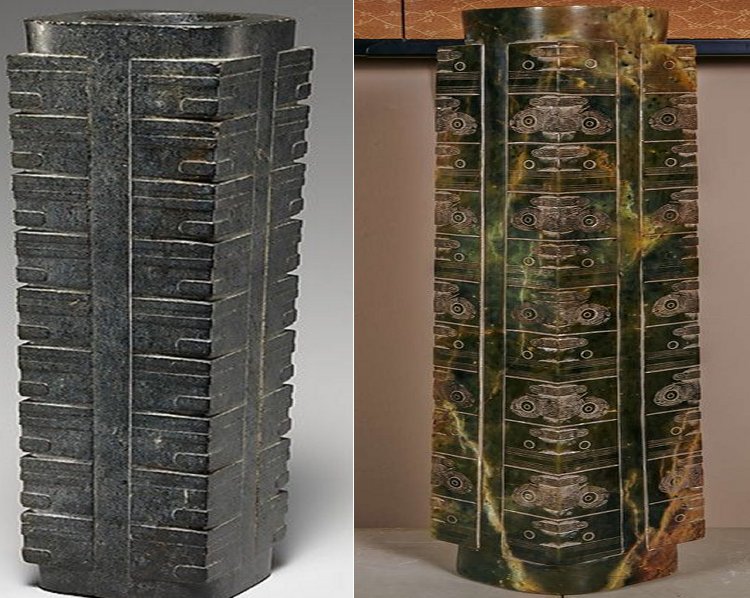 Letf: A jade cong with notches. Image: MetMuseum: Right: Another jade cong. Image: 1stdibs.com
Letf: A jade cong with notches. Image: MetMuseum: Right: Another jade cong. Image: 1stdibs.com
The jade cong must have been of great importance to the ancient Chinese, and other countries civilizations continued to manufacture the artifact. Several sophisticated examples of the cong appeared during the Shang (1600-c.1046 BC) and Zhou (1046 - 256 BC) dynasties.
Why the Liangzhu culture manufactured the jade cong?
The Liangzhu people inhabited China's Jiangsu province during the third millennium BC. Archaeologists have unearthed many extraordinary objects in royal tombs, palaces, and workshops.
All these ancient items offer evidence the Liangzhu people possessed knowledge of advanced ancient technology and produced sophisticated jade artifacts.
Unfortunately, the Liangzhu people did not have a system of writing. No records can shed light on their ancient culture, historical events, leaders, and religious beliefs.
Without written records, the meaning of jade objects, the significance of their shapes and decorations, and their purpose and function in society remain unknown.
Advanced Technology Was Used To Manufacture Jade Cong
What kind of sophisticated technology was involved in the production of jade cong?
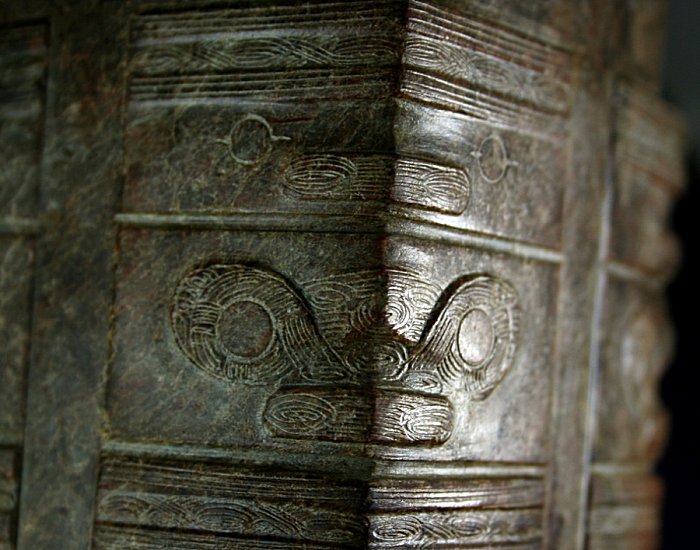 What were these mysterious jade objects? Why were these artifacts so important to the ancient Chinese? Image credit: Guwan Soucang Chinese Antiques
What were these mysterious jade objects? Why were these artifacts so important to the ancient Chinese? Image credit: Guwan Soucang Chinese Antiques
Was it perhaps an advanced drilling process that is essentially identical to the drilling process we use today? If true, it would be amazing because this Neolithic production of cong occurred in 3400-2250 BC, about 5,000 years ago.
"Some holes may have been cut using a stone gouge with the jade on a rotating turntable.
This method is thought to have been employed at a Bronze Age workshop in northern Vietnam," writes D. Hatcher Childress in his book "Ancient Technology in Peru and Bolivia."
An x-ray of one of the very tall cong shows that "a hole was made from each end using a combination of large and small drills. The arc-shaped mark was cut with a thick grinding wheel. This drill, like the others, was tubular. The two holes meet halfway along the length of the cong, but they were misaligned, barely joining.
The grinding wheel that made the arc-shaped marks would have been mounted on a rotary lathe..."
Form And Decorations Of Jade Cong
A cong is formed as a tube with a circular inner section and a squarish outer section.
The outer surface is divided horizontally or vertically, and the whole defines a hollow cylinder embedded in a partial rectangular block. A cong was produced in various sizes, shapes, and with different decorations.
Sometimes, a jade cong may be squat or taller than it is wide. The outer faces are sometimes decorated with mask-like faces, which may be related to the "taotie," a motif found on later Chinese ritual bronze vessels dating from the Shang and Zhou dynasty.
Jade Cong And Its Unknown Function And Purpose
One of this ancient artifact's most intriguing aspects is its unknown function and purpose.
 The earliest cong were produced by the Liangzhu culture (3400-2250 BC)
The earliest cong were produced by the Liangzhu culture (3400-2250 BC)
Congs shaped as square tubes with circular holes are among the most impressive yet enigmatic ancient Chinese jades. Their function and meaning are entirely unknown. The central motif used to decorate them was a simplified monster face pattern, which fitted around the square-sectioned corners. The cong was decorated with circles; some were assumed to depict eyes that were only occasionally visible.
What was the symbolism behind the eyes? Researchers are still unable to answer that question.
Ancient Chinese Produced Many Jade Artifacts
China has been the leading producer of jade objects for over 5,000 years.
Jade is a hard mineral. Most jade does not have the color and translucence expected in a gemstone. However, when early people found these particular pieces of jade, they were often inspired to craft them into unique and sometimes sacred objects.
Jade is a durable, colorful material that can be worked into shapes and highly polished. These properties make it a very desirable gemstone. Jade has been used to make jewelry items such as pendants, necklaces, rings, bracelets, earrings, beads, cabochons, tumbled stones, and other things.
These jewelry items are often made of solid jade, combined with other gems, or placed in settings made from gold, silver, or other precious metals. In addition to jewelry, jade makes small sculptures, ornaments, religious art, and small functional objects.
Although the Chinese produced several jade artifacts, many of which have been discovered, almost nothing is known about the role that jade cong played in ancient times.
Written by – A. Sutherland - AncientPages.com Senior Staff Writer
Copyright © AncientPages.com All rights reserved. This material may not be published, broadcast, rewritten or redistributed in whole or part without the express written permission of AncientPages.com
Expand for referencesMore From Ancient Pages
-
 The Day When The Sun Did Not Come Out – Bizarre Event In 1780, New England
Featured Stories | Apr 18, 2023
The Day When The Sun Did Not Come Out – Bizarre Event In 1780, New England
Featured Stories | Apr 18, 2023 -
 Danger Lurking In The Woods – Strange And Unexplained Sightings – Part 2
Featured Stories | Jul 7, 2018
Danger Lurking In The Woods – Strange And Unexplained Sightings – Part 2
Featured Stories | Jul 7, 2018 -
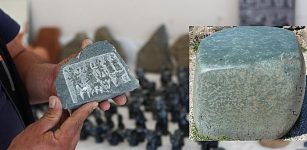 Famous Ancient Hittite Figures And Symbols Engraved In Stone By A Local Artist From Çorum Province, Anatolia
News | Aug 8, 2020
Famous Ancient Hittite Figures And Symbols Engraved In Stone By A Local Artist From Çorum Province, Anatolia
News | Aug 8, 2020 -
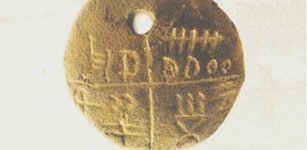 Controversial Tartaria Tablets: The First Writing System In The World?
Artifacts | Nov 13, 2014
Controversial Tartaria Tablets: The First Writing System In The World?
Artifacts | Nov 13, 2014 -
 On This Day In History: Terrorist Attacks On World Trade Center And Pentagon – On Sep 11, 2001
News | Sep 11, 2016
On This Day In History: Terrorist Attacks On World Trade Center And Pentagon – On Sep 11, 2001
News | Sep 11, 2016 -
 Gate of Zeus Temple Is A New Discovery In Western Turkey
Archaeology | Sep 30, 2021
Gate of Zeus Temple Is A New Discovery In Western Turkey
Archaeology | Sep 30, 2021 -
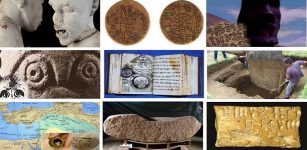 10 Mysterious Undeciphered Ancient Scripts, Tablets, Codes And Maps
Artifacts | Sep 16, 2014
10 Mysterious Undeciphered Ancient Scripts, Tablets, Codes And Maps
Artifacts | Sep 16, 2014 -
 Ancient Dance And Games Offer Glimpses Of Life And Death In Italy 2,500 Years Ago
Archaeology | Mar 24, 2023
Ancient Dance And Games Offer Glimpses Of Life And Death In Italy 2,500 Years Ago
Archaeology | Mar 24, 2023 -
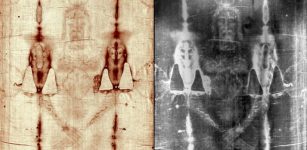 Blood Discovered On The Shroud Of Turin – Strand Of Jesus’ DNA Can Be Found – Researchers Say
Archaeology | Jul 19, 2017
Blood Discovered On The Shroud Of Turin – Strand Of Jesus’ DNA Can Be Found – Researchers Say
Archaeology | Jul 19, 2017 -
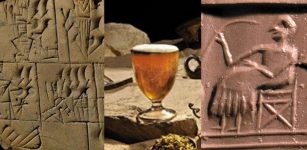 Ninkasi – Sumerian Goddess Of Beer And Alcohol – The Hymn To Ninkasi Is An Ancient Recipe For Brewing Beer
Featured Stories | Feb 27, 2019
Ninkasi – Sumerian Goddess Of Beer And Alcohol – The Hymn To Ninkasi Is An Ancient Recipe For Brewing Beer
Featured Stories | Feb 27, 2019 -
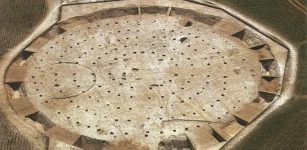 Why Was Dorset Ancient Mega Henge Built In Such A Hurry?
Archaeology | Nov 5, 2020
Why Was Dorset Ancient Mega Henge Built In Such A Hurry?
Archaeology | Nov 5, 2020 -
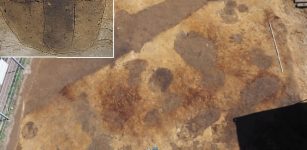 Roman Naval Base of Haltern in Germany Was Rebuilt Four Times 2,000 Years Ago
Archaeology | May 8, 2023
Roman Naval Base of Haltern in Germany Was Rebuilt Four Times 2,000 Years Ago
Archaeology | May 8, 2023 -
 The Untold Story Of The Lost City Of Machu Picchu Ignored By Historians
Featured Stories | Aug 4, 2020
The Untold Story Of The Lost City Of Machu Picchu Ignored By Historians
Featured Stories | Aug 4, 2020 -
 Controversial Story And Secret Knowledge Of Li Ching-Yuen Who Lived For 256 Years
Featured Stories | Sep 19, 2015
Controversial Story And Secret Knowledge Of Li Ching-Yuen Who Lived For 256 Years
Featured Stories | Sep 19, 2015 -
 Meidum ‘Collapsed’ Pyramid Of Great Builder Pharaoh Snefru
Featured Stories | Jan 2, 2017
Meidum ‘Collapsed’ Pyramid Of Great Builder Pharaoh Snefru
Featured Stories | Jan 2, 2017 -
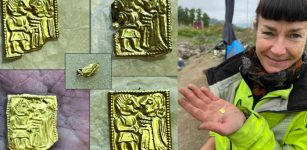 Mysterious Tiny 1,400-Year-Old Gold Foil Figures Found In Pagan Temple
Archaeology | Sep 23, 2023
Mysterious Tiny 1,400-Year-Old Gold Foil Figures Found In Pagan Temple
Archaeology | Sep 23, 2023 -
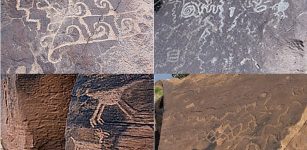 Lyman Lake Petroglyphs And Famous Kokopelli-Flute Player Left By Ancestors Of The Hopi Indians
Civilizations | Nov 26, 2018
Lyman Lake Petroglyphs And Famous Kokopelli-Flute Player Left By Ancestors Of The Hopi Indians
Civilizations | Nov 26, 2018 -
 Roman-era mass grave with 60 bodies found in farmer’s field
Civilizations | Aug 27, 2015
Roman-era mass grave with 60 bodies found in farmer’s field
Civilizations | Aug 27, 2015 -
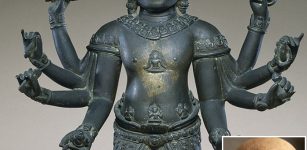 A 1.9-Meter Statue Of A Guard And Part Of A Medicine Buddha Unearthed By Angkor Archaeologists
Archaeology | Sep 1, 2017
A 1.9-Meter Statue Of A Guard And Part Of A Medicine Buddha Unearthed By Angkor Archaeologists
Archaeology | Sep 1, 2017 -
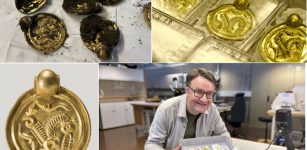 Largest Ancient Gold Treasure Of Its Kind Discovered In Stavanger, Norway
Archaeology | Sep 7, 2023
Largest Ancient Gold Treasure Of Its Kind Discovered In Stavanger, Norway
Archaeology | Sep 7, 2023
